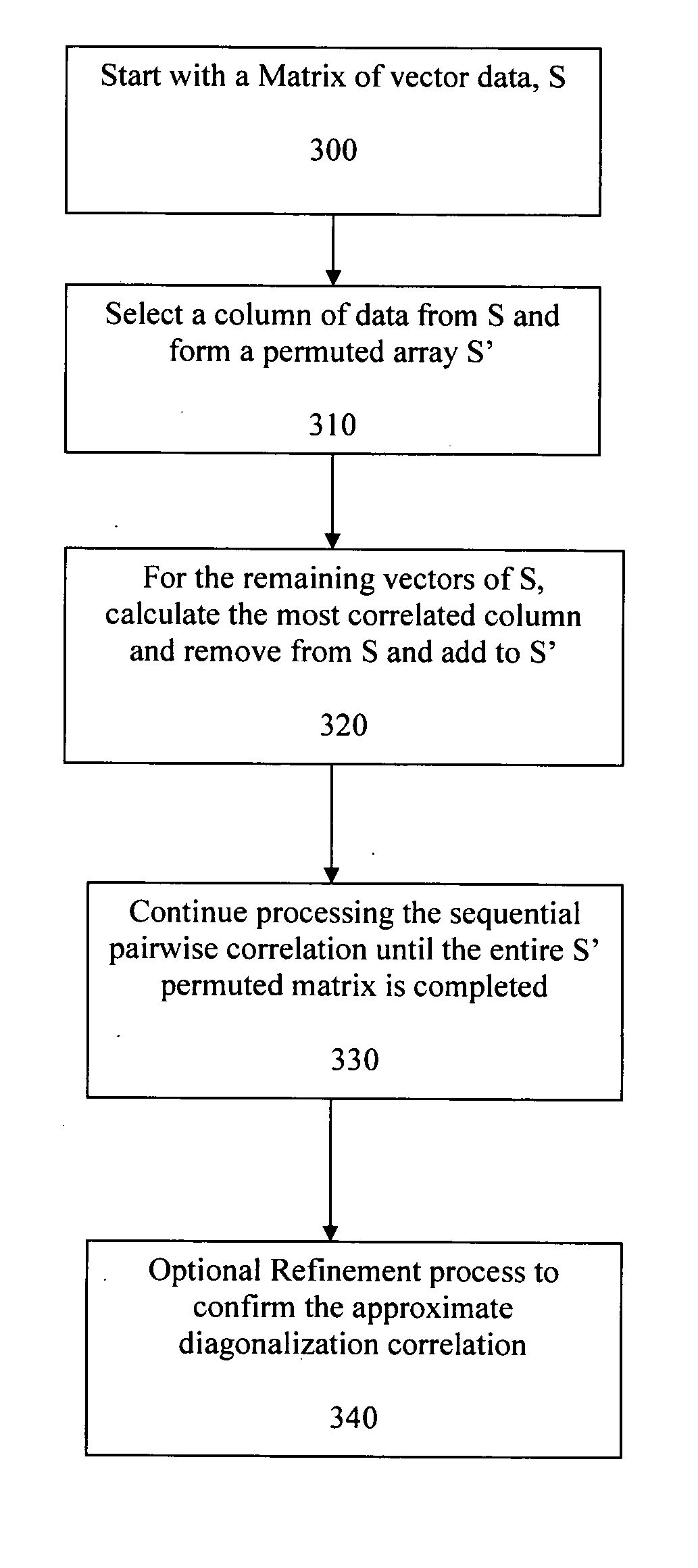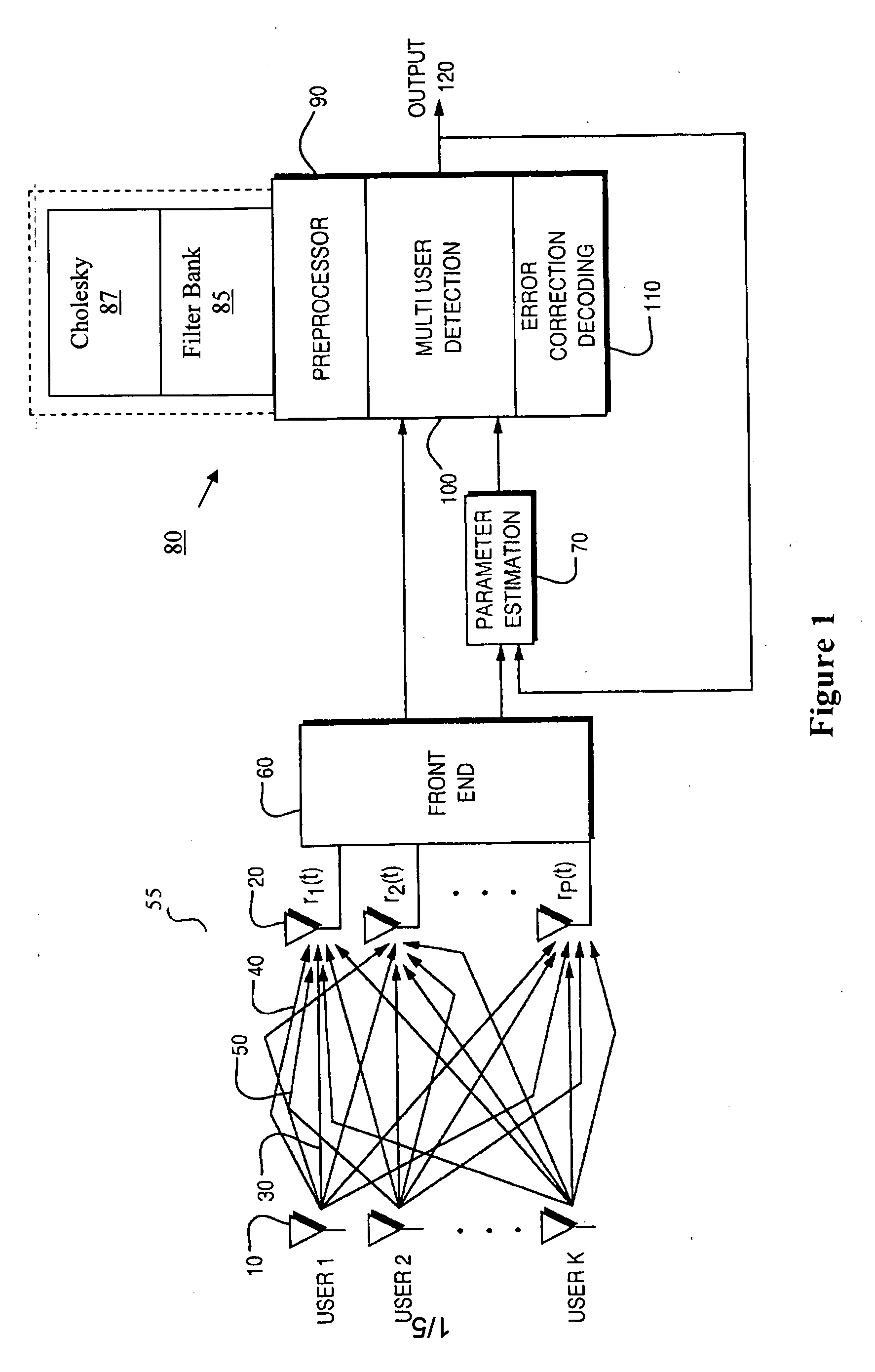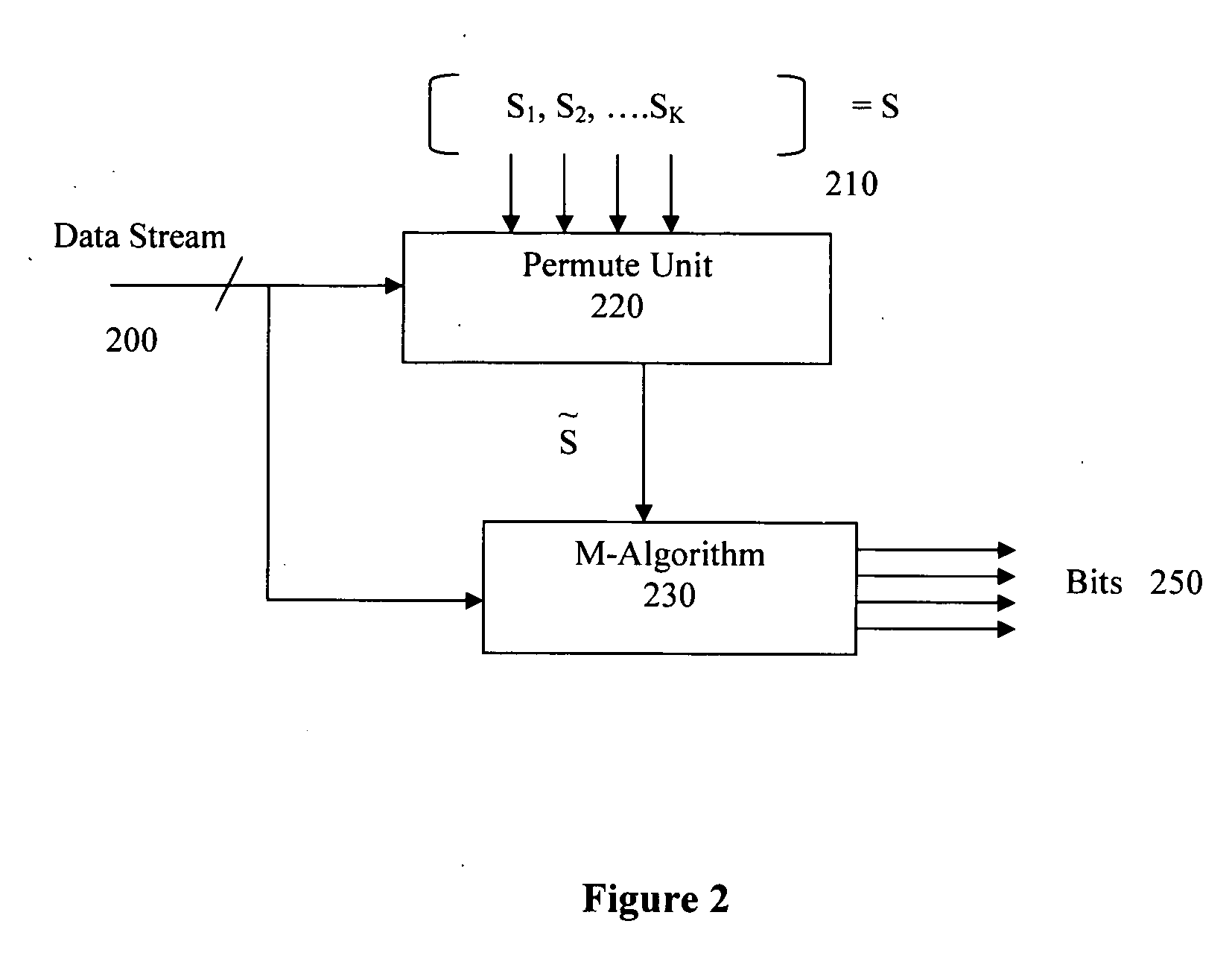M-algorithm with prioritized user ordering
a user ordering and priority algorithm technology, applied in the field of receiving device processing, can solve problems such as real-time problems, overloaded conditions, and inability to extract the correct data from a given user, and achieve the effect of reducing the number of computations and improving the mud computation
- Summary
- Abstract
- Description
- Claims
- Application Information
AI Technical Summary
Benefits of technology
Problems solved by technology
Method used
Image
Examples
Embodiment Construction
[0045] The methods and embodiments of the re-ordered MUD disclosed herein enable implementations of low complexity advanced receiver processing providing high quality real-time processing for multiple access systems operating.
[0046] The described embodiments are just an illustration of the digital processing technique that is applicable to the many variations and applications all within the scope of the invention. A description of multiuser processing for various embodiments is detailed in the commonly assigned patents and patent applications including U.S. Pat. No. 6,947,506 titled Method and Apparatus for Improved Turbo Multiuser Detector; U.S. Pat. No. 6,831,574 titled Multi-Turbo Multi-User Detector; and U.S. Pat. No. 6,704,376 titled Power and Confidence Ordered Low Complexity Soft TurboMUD with Voting System; U.S. Published Patent No. 2003 / 0204808 titled Method and Apparatus for Random Shuffled Turbo Multiuser Detector; and 2003 / 0138035 titled Voting System for Improving the ...
PUM
 Login to View More
Login to View More Abstract
Description
Claims
Application Information
 Login to View More
Login to View More - R&D
- Intellectual Property
- Life Sciences
- Materials
- Tech Scout
- Unparalleled Data Quality
- Higher Quality Content
- 60% Fewer Hallucinations
Browse by: Latest US Patents, China's latest patents, Technical Efficacy Thesaurus, Application Domain, Technology Topic, Popular Technical Reports.
© 2025 PatSnap. All rights reserved.Legal|Privacy policy|Modern Slavery Act Transparency Statement|Sitemap|About US| Contact US: help@patsnap.com



